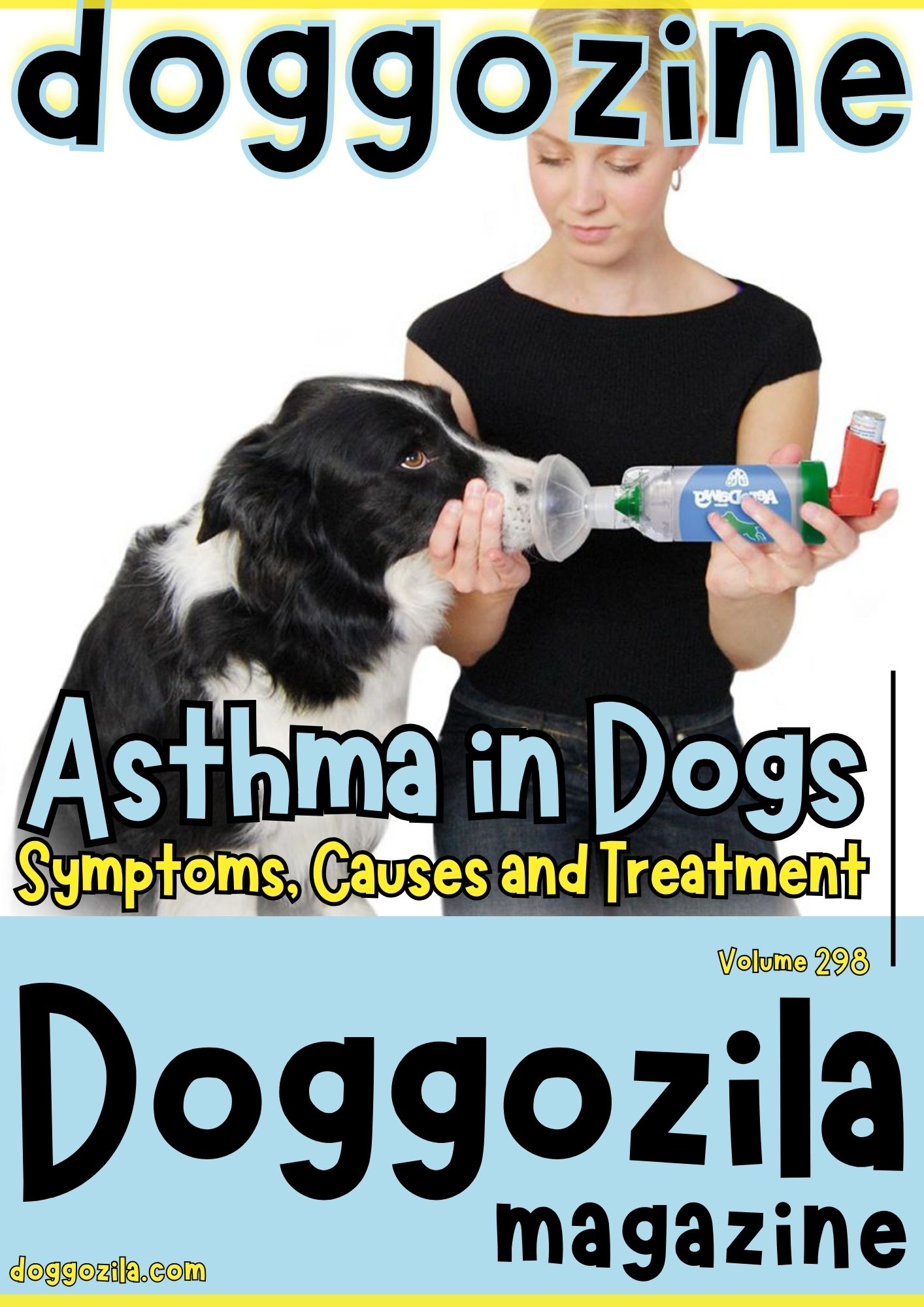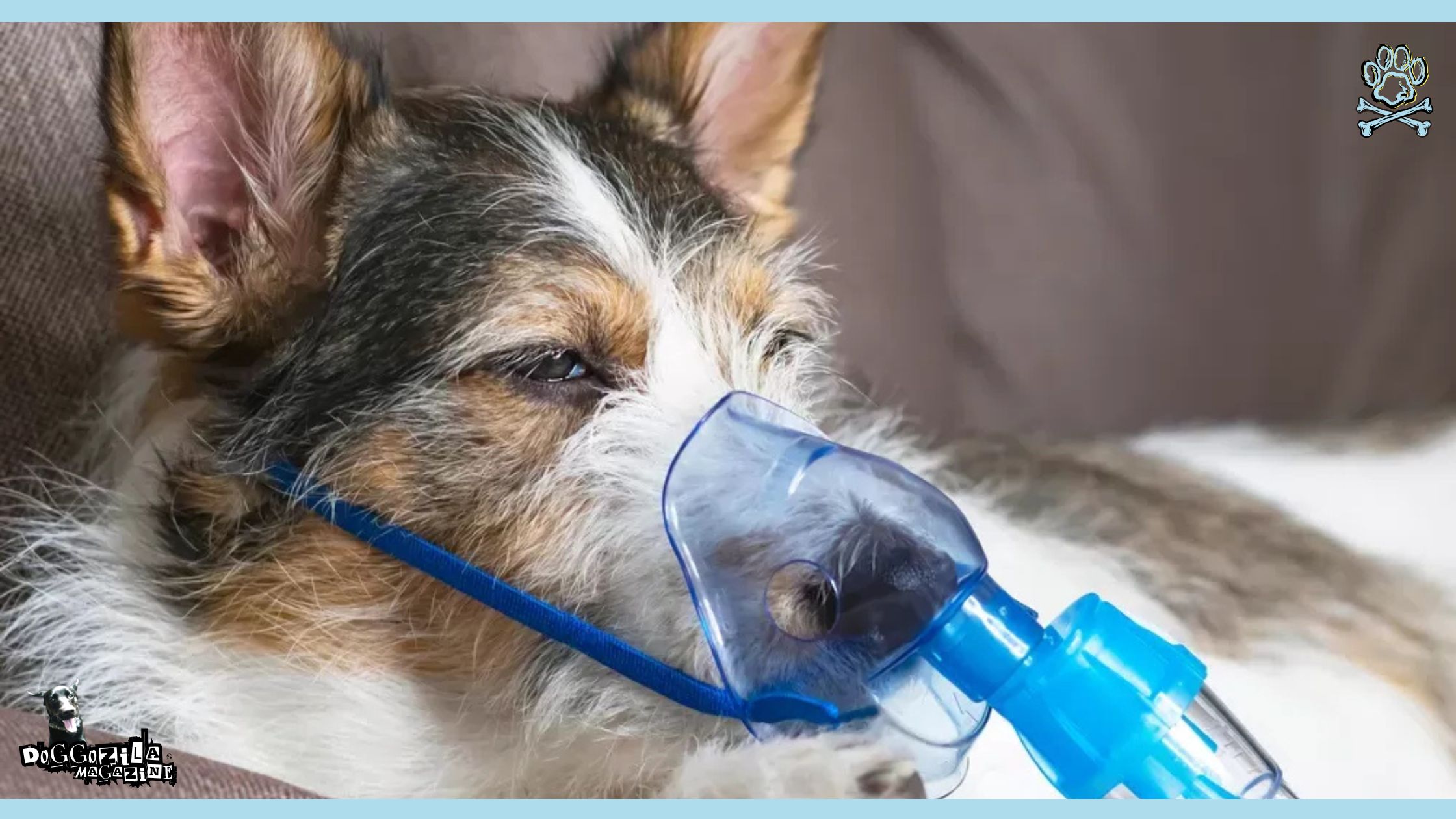Asthma in dogs, although less frequently diagnosed than feline asthma, represents a significant respiratory condition that can affect all breeds. It is primarily defined as an allergic disorder that leads to inflammation and constriction of the airways, resulting in difficulty breathing and other respiratory complications.

UNDERSTANDING ASTHMA IN DOGS
In dogs, this condition typically arises due to environmental allergens such as pollen, dust mites, mold, and smoke. The precise mechanisms of asthma in dogs may vary, but the underlying principle is the same: an abnormal immune response to otherwise innocuous substances in their environment.
Can Dogs Suffer from This Respiratory Condition?
While not as prevalent as in cats, the existence of asthma in dogs should not be underestimated. It can occur in various breeds and ages, though certain dogs may be more predisposed due to genetic factors. The clinical manifestation of dog asthma can resemble other respiratory issues, making an accurate diagnosis crucial.
Symptoms may include wheezing, coughing, labored breathing, and an increased respiratory rate. These signs can sometimes be mistaken for other health problems, thus complicating treatment and management.
The seriousness of dog asthma lies in its potential to cause significant health complications. Untreated, it can lead to chronic respiratory problems in dogs, decreased quality of life, and even life-threatening situations. Therefore, it is vital for dog owners to remain vigilant about their pets’ health.
Understanding the nature of canine asthma is the first step toward effective prevention and management. By recognizing the signs and seeking timely veterinary care, pet owners can mitigate the risks associated with this respiratory condition, ensuring their canine companions lead a healthy and active life.
🔑 Key Points: Dog Asthma represents a significant respiratory condition that can affect all breeds. Symptoms may include wheezing, coughing, labored breathing, and an increased respiratory rate.

SYMPTOMS OF ASTHMA IN DOGS
Asthma in dogs is a condition that can manifest through various symptoms, making it crucial for pet owners to be vigilant in observing their pets’ behavior.
Indicators of Asthma in Dogs
One of the primary indicators of asthma is coughing. This cough may be dry and persistent or may be accompanied by the production of mucus. Frequent coughing episodes can be mistaken for a simple cold or dog allergies, but when they persist, it might signal the onset of asthma.
Another symptom to look for is wheezing. This sound often occurs when a dog exhales and can indicate narrowing of the airways. Owners might notice this noise particularly during episodes of exertion or excitement. Furthermore, difficulty breathing is a significant symptom of canine asthma.
This may manifest as labored breathing, where the dog seems to be struggling to get enough air, often characterized by an open mouth and rapid chest movements.
Increased respiratory rates can also indicate that a dog is suffering from asthma. A healthy dog typically breathes at a rate of 10 to 30 breaths per minute, depending on factors such as size and activity level. An elevated respiratory rate, especially when at rest, may suggest underlying respiratory distress.
Timely Intervention Can Improve a Dog’s Life
Pay careful attention to these changes, as they can be subtle and easily overlooked during regular observation. It is also important to note that some dogs may exhibit signs of anxiety or restlessness when they are experiencing difficulty breathing.
An asthmatic dog may seek out cool, ventilated areas or may be reluctant to engage in physical activities that they previously enjoyed.
Recognizing these symptoms early is vital for ensuring that your canine companion receives the appropriate veterinary attention, as timely intervention can significantly improve their quality of life.
🔑 Key Points: One of the primary indicators of asthma is coughing. Another symptom to look for is wheezing. Increased respiratory rates can also indicate that a dog is suffering from asthma.

CAUSES AND TRIGGERS OF ASTHMA IN DOGS
Asthma in dogs is a complex respiratory condition that can be influenced by numerous factors. The primary causes of asthma are often linked to allergens that are prevalent in the environment.
Allergens That Can Cause Asthma In Dogs
Common allergens include pollen from trees, grasses, and weeds, which can provoke an inflammatory response in susceptible dogs. Dust mites, often found in household dust, can also trigger asthmatic symptoms. Exposure to smoke, whether from tobacco or other sources, significantly increases the risk of respiratory issues in dogs, making them more susceptible to asthma attacks.
In addition to environmental allergens, there are other factors that can contribute to the onset of asthma in dogs. These include air pollution and chemicals such as household cleaners, perfumes, and pesticides. In some cases, extreme weather changes can exacerbate existing respiratory conditions, leading to increased asthma flare-ups.

Short-Nosed Dog Breeds Have Higher Respiratory Issues
Some breeds, particularly those with brachycephalic (short-nosed) characteristics, may have a higher likelihood of developing respiratory issues, including asthma, due to physical abnormalities in their respiratory tracts.
Underlying health conditions can further complicate the picture. Conditions such as obesity can increase a dog’s susceptibility to asthma, as excess weight places additional strain on the respiratory system.
Moreover, a history of allergies or bronchitis may predispose a dog to asthma. It is important for pet owners to be vigilant about any signs of respiratory distress, as identifying the causes and triggers early can facilitate timely management and treatment of the condition.
Understanding these causes and triggers is crucial for effectively managing asthma in dogs. By minimizing exposure to known allergens, ensuring a clean living environment, and maintaining overall health, dog owners can significantly improve their pet’s quality of life and help prevent serious respiratory complications.
🔑 Key Points: The primary causes of asthma are often linked to allergens (pollen from trees, grasses, and weeds) that are prevalent in the environment. Other causes to watch for are air pollution and chemicals such as household cleaners, perfumes, and pesticides.

DIAGNOSIS OF ASTHMA IN DOGS
Diagnosing dog asthma involves a comprehensive approach that requires detailed examinations and assessments by a veterinarian. The process typically begins with a thorough history assessment, where the owner provides information about the dog’s symptoms, behavior, and environment.
What To Look for Asthma in Dogs
Key signs to observe include persistent cough, wheezing, difficulty breathing, and episodes of panting. Such details are crucial in distinguishing asthma from other respiratory conditions that may exhibit similar symptoms. Following the history assessment, a veterinary examination is performed.
During this examination, the veterinarian may conduct physical assessments to evaluate the dog’s respiratory health. This often includes listening to the dog’s lungs with a stethoscope to detect abnormal sounds that may indicate respiratory distress.
In addition to respiratory symptoms, the veterinarian will also check for any signs of other health issues that could complicate the diagnosis.
What Tests Tell Us About The Asthma In Dogs
In some cases, additional diagnostic tests may be warranted to achieve a definitive diagnosis. These tests might include imaging studies, such as X-rays or ultrasound, to assess the structure of the lungs and rule out conditions like pneumonia, tumors, or bronchitis.
Blood tests may also be conducted to evaluate inflammation levels or to determine the presence of allergens. It’s vital that healthcare providers differentiate asthma from other respiratory issues like heart disease or foreign body obstruction, as the treatment protocols will vary significantly based on the underlying condition.
Accurate diagnosis ensures that the most effective treatment plan is implemented, enhancing the quality of life for the affected canine.
🔑 Key Points: Key signs to observe for dog asthma include persistent cough, wheezing, difficulty breathing, and episodes of panting.

TREATMENT OPTIONS FOR ASTHMA IN DOGS
Effective management of dog asthma often requires a multi-faceted approach that includes medication, lifestyle modifications, and environmental adjustments. The primary goal of treatment is to alleviate symptoms and prevent asthma attacks, thus improving the quality of life for affected dogs.
Medications For Treating Asthma In Dogs
One of the primary classes of medications used in treating dog asthma are bronchodilators. These medications work by expanding the airways in the lungs, facilitating easier breathing for the dog. Commonly prescribed bronchodilators for canine asthma include terbutaline and albuterol, which can be administered through inhalers or nebulizers, allowing for direct delivery to the lungs.
Corticosteroids are also frequently used to reduce inflammation within the airways. These can be given orally, topically, or through injection. It is essential that any steroid treatment be monitored by a veterinarian due to potential long-term side effects.
In addition to these pharmacological interventions, lifestyle and environmental modifications play a crucial role in managing asthma. Pet owners should aim to create an environment free from common respiratory irritants. This includes minimizing exposure to secondhand smoke, eliminating dust and mold, and using air purifiers to improve indoor air quality.
Grooming Can Prevent Allergens in Dogs
Regular grooming can help reduce airborne allergens, such as dander. Furthermore, keeping dogs at a healthy weight can decrease the workload on their respiratory system, thus aiding in the management of asthma symptoms. Each dog is unique, necessitating a tailored treatment plan that takes into account factors such as age, breed, and severity of the condition.
Veterinarians typically work closely with pet owners to monitor the dog’s response to treatment, making adjustments as needed to ensure optimal management of the respiratory condition. Regular check-ups are crucial to assess the effectiveness of the treatment plan and to make necessary changes in a timely manner.
🔑 Key Points: The primary goal of treatment asthma in dogs is to alleviate symptoms and prevent the disease to attacks, thus improving the quality of life for affected dogs.

PREVENTIVE MEASURES FOR ASTHMA IN DOGS
Managing canine asthma effectively begins with implementing preventive measures that can significantly reduce the risk of respiratory distress.
One of the primary steps dog owners can take is to minimize exposure to common allergens that can trigger asthma attacks. This includes avoiding smoke from cigarettes or candles, as well as minimizing exposure to dust, pollen, mold, and pet dander. Maintaining a smoke-free environment is crucial, as even secondhand smoke can exacerbate respiratory issues in dogs.
Clean and Fresh Spaces Always Help
Regular cleaning of the home is essential to reduce allergens. Vacuuming carpets, upholstery, and other surfaces with a HEPA filter can help capture airborne particles that may affect your dog’s respiratory health. Additionally, washing bedding and other items routinely in hot water can further decrease potential allergen exposure. Dog owners should also consider using air purifiers to maintain air quality in the home, particularly in areas where their pets spend most of their time.
Monitoring your dog’s health and behavior is another vital preventive measure. Owners should be aware of their pet’s normal breathing patterns and look for any signs of distress, such as wheezing, coughing, or excessive panting. Regular veterinary check-ups will allow for early detection of potential respiratory issues and facilitate timely interventions. Keeping track of your dog’s daily activities can also provide insights into their condition and help you identify specific triggers.
In addition, consulting with a veterinarian about possible allergies and appropriate management strategies is beneficial. Formulating a tailored health plan might include dietary adjustments, medication, or lifestyle changes designed to suit your dog’s specific needs. By taking these steps, dog owners can proactively mitigate the risk of asthma symptoms and promote a healthier, more comfortable life for their pets.
Living with Dogs that Have Asthma: Tips for Owners
Owning a dog diagnosed with asthma can pose unique challenges, but with the right knowledge and care, pet owners can ensure a comfortable life for their furry companions. Understanding how to recognize the signs of an asthma attack is crucial.
Common symptoms include labored breathing, coughing, wheezing, and lethargy. If you notice your dog struggling for breath or displaying these symptoms, it is important to remain calm and act swiftly. In cases of an asthma attack, the first step is to remove your dog from any potential triggers. This may include exposure to smoke, allergens, or extreme temperature changes.
Create a quiet, stress-free environment where your dog can rest. If symptoms persist or worsen, do not hesitate to contact your veterinarian or an emergency animal clinic for immediate assistance. Knowing the location of the nearest emergency vet can prove invaluable in high-stress situations.
A Quick Summary about Asthma in Dogs
Regular veterinary check-ups are essential for managing your dog’s asthma. Your veterinarian will monitor their condition, adjust medications as needed, and provide guidance on how to minimize asthma triggers within your home. Additionally, discussing a management plan for any potential environmental allergens can drastically improve your dog’s well-being.
Furthermore, consider implementing lifestyle changes that can enhance your dog’s quality of life. Maintaining a clean living space by utilizing air purifiers and minimizing dust can greatly benefit your dog’s respiratory health. Regular exercise is important; however, it may require modification to keep it safe and manageable.
Opt for short, gentle walks rather than vigorous play, especially during high pollen or pollution days. With these strategies in mind, dog owners can create a supportive environment and ensure their pets live happy, healthy lives despite their asthma condition.










